Deziree Dizon was dragged to art school. Although the recent college graduate wanted to get a master’s degree in art, her mother was opposed — she felt it wasn’t a useful field of study. Dizon was dissuaded, but one day in 2010, while visiting San Francisco with her cousin, they found themselves in front of the Academy of Art University, and he persuaded her to reconsider. “He had to literally drag me to an admissions person … just so I could get some information,” she says.
“Tony” was the first drawing Deziree Dizon did that she considers
to be fine art, and she submitted it to Davis’ Pence Gallery’s
“Exhibit It” community show in 2017. It received the curator’s
choice award.
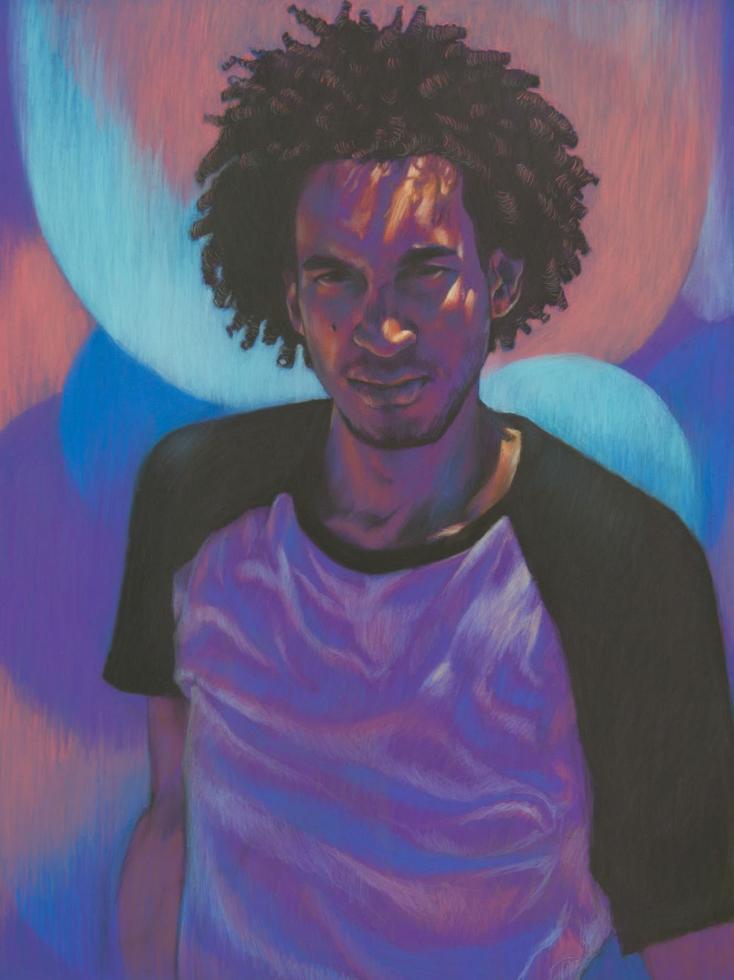
She’s been working full time as a software engineer in Davis since 2014, and during that time, she began making and posting dozens of videos of herself drawing fan art portraits of actors and musicians with soft pastels (sticks of powdery pigment) on her YouTube channel, Teal Monster. But a motorcycle crash in 2017 was an impetus for her to take her work in a different direction. After the accident, she began making fine art pieces — often portraits with abstract or geometric backgrounds and oversaturated color palettes — and submitting them to galleries. She’s since shown her work at Pence Gallery in Davis and Blue Line Arts in Roseville.
Why did your cousin have to drag you to art school?
When I had moved to California, I was actually working as a substitute teacher for a while, and then when I was earning some money for a while, I told my mom, “I want to go back to school, and I want to do art.” And she actually told me, “That’s not a good idea. I don’t think you should do it.” … I didn’t really want to go against what my mom was telling me. So it took my cousin to actually do it, to actually go to art school.
Then did you see it as a viable or worthwhile thing? When did the light bulb go off?
It was around 2010, because I think it’s with adjusting to having moved from the Philippines to here, I did feel some lack of direction. Because when I moved here, we were in a depression. It was hard to get a job in the engineering field, and I knew I didn’t want to keep being a substitute teacher. … I opened up to (my cousin) and told him, “This is really what I want to do, but everyone else is telling me to do all these other things.”
Soft pastels are Deziree Dizon’s medium of choice.
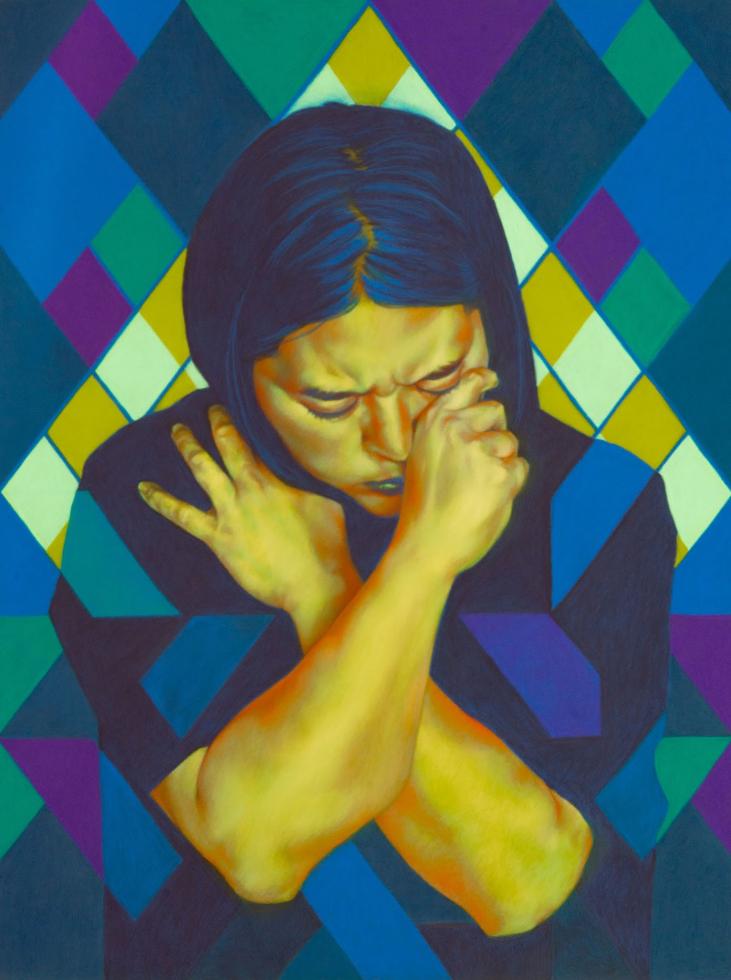
You do mostly figurative work and portraiture, and your medium is mostly pastels. It’s pretty unusual to find artists who work in pastels.
I agree. … I had a YouTube channel that I was trying to upload a portrait every week, and I was doing all the portraits doing the soft pastels, (but) … in 2017, I got into a motorcycle accident, and then I realized I wanted to do more with my life.
When did you start showing your work?
In 2017. So it was after my motorcycle accident, that’s when I made my first fine art piece — it was entitled “Tony.” It was my friend. I decided to see if I could get it to a point where it looked finished or just look better than anything I’ve done before. … I submitted it to the Pence Gallery community exhibit, (“Exhibit It”). … You just needed to be one of the first 50 people to get to submit a piece, and your piece would be hung up in the gallery. … The assistant director actually called me up and told me I had won the curator’s choice that year. So I think that’s what set all of the gallery showings in motion for me. It kind of showed me it was possible for me to actually do something that was worth showing.
Did you tell you your cousin about that, and did he reply with, “I told you so”?
(Laughs.) He always does! … Every time something major happens in me making art, I usually tell him, and it makes him happy because it paid off that he dragged me to art school.
A motorcycle crash in 2017 was the impetus that drove Deziree
Dizon to switch from making fan art portraits to fine art pieces.

I would consider Gary Amaro was. … He was my adviser for (my) graphic novel (thesis at the Academy of Art). … I still talk to him and ask him for advice whenever I need something. I usually (ask) him when someone comes to me to ask to do this commission, what should I do. … Sometimes I go back to the school to just visit him and sit in his class. I felt like he had a lot of confidence in what I could do while I was in art school, and I didn’t. … He told me, “You know exactly what you’re doing, you’re just overthinking.” … He really made me feel like I was … going down the correct path.
You mentioned a motorcycle accident you were involved in. Is that something you are comfortable talking about?
I had gotten into a motorcycle accident on (Interstate) 680 somewhere near (the Bollinger Canyon Road exit in San Ramon). … There was a trash can on the freeway. … I ended up (hitting it). … I just remember falling over to the side and then rolling on the freeway. … I came away with a few bruises and scratches on my hips, and a broken thumb was the worst of it — on my drawing hand, though. …
(When I got up), I think the first thing that I said was that I’m sorry, which was, when I look back on that, it told me I had problems with myself. Because the first thing you say after getting up from an accident shouldn’t be, “I’m sorry.” I was actually very depressed before the accident happened, but after the accident, it just turned on a switch that kind of flipped everything over, so then it made me more determined to take advantage of still being around.
Deziree Dizon’s cousin convinced her to follow her dream of
getting a master’s degree in art.
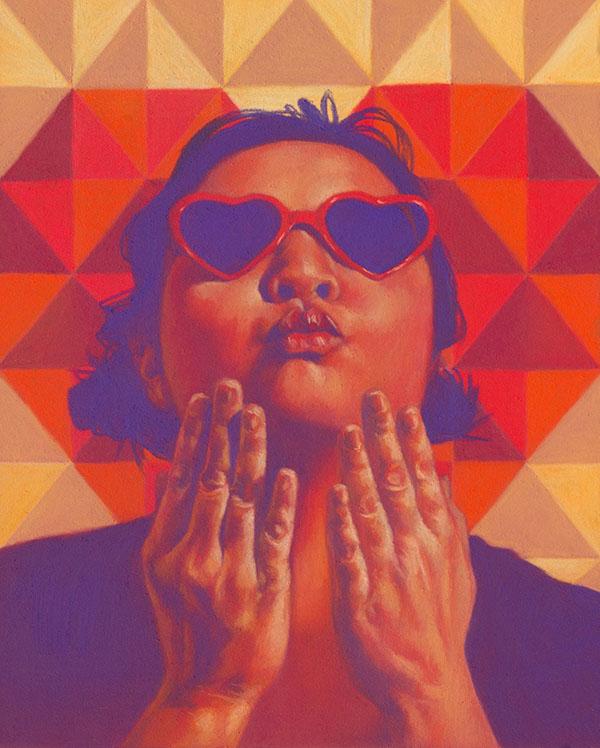
One of my first fears after I broke my thumb was, was I still going to be able to draw? … One of the other fears (was) … not going back to riding. … I still continue to ride up to this day.
What has been the thing you’ve discovered as a professional artist that your MFA program did not prepare you for?
What I wasn’t prepared for was all the PR that you have to do. … I’ve prioritized the part of making the art, but then I don’t put as much in effort in putting myself out there. … That used to stress me out, because I felt like I always had to keep creating pieces and putting them out there and somehow getting myself noticed on social media. … It detracted from me from making art, and actually that love for making art was kind of drained away. … I’m slowly learning how to put myself out there.
Your thesis was a graphic novel. Were you hoping to go more that way?
Yeah, I was actually hoping that after graduating (with) my MFA, I would work on a graphic novel and pitch that to a publisher. But what ended up happening is that I found an engineering job, and so I was doing that from 2014 until I finally got to a point where I felt stable in my job and I was able to start making time for making art. …
In 2017 … (when the Pence Gallery’s) assistant director asked me for a portfolio … I didn’t have a portfolio. … I started making more pieces that were of that quality.
You must have had — or maybe you still do — have a sense of impostor syndrome because of that?
Oh, absolutely! I think every day.
Even though you’ve had multiple shows, a website that has many pieces on there, you’ve had commissions, you still feel like, “I’m not supposed to be here”?
Absolutely. I still get that a lot. Sometimes I look back at a few of my videos, and I rewatch myself making a piece and tell myself, “I actually did that.” I got to give myself a little more credit.
The pandemic provided an opportunity for Deziree Dizon to make
artwork that “I would actually want to see and not worry about
whether this is going to be something that people would want to
buy,” she says.

It made me really grateful that I have art as something I can sort of go back to and made it more evident how important it was for me to be making art. … I also had started thinking about what I was trying to do with my art. When I had started sending it to galleries, I got to a point I was making art that was palatable for most people, so that they would be interested in it or feel like it would sell. … (So) I started focusing … (on making) something I would actually want to see and not worry about whether this is going to be something that people would want to buy.
Do you think during this time, artists and arts organizations have been receiving enough support, and if not, what would that support look like?
I think that artists have continued, and I think will always continue, to create in spite of how hard circumstances will be. In terms of art organizations, I think they are a little more hard hit by the pandemic, because … there’s less people interested in coming to shows and because it does require being in a room together. …
Firsthand, I can see the Pence Gallery, they’re really struggling. They started struggling with the pandemic happening because it’s cut off a few of their fundraising events for their organization, and they’ve had to learn to adapt to get people to engage into what they’re trying to offer to the community. … They need more community support. They need it more now than they ever did in the past.
—
Stay up to date on arts and culture in the Capital Region: Follow Comstock’s on Instagram!
Recommended For You
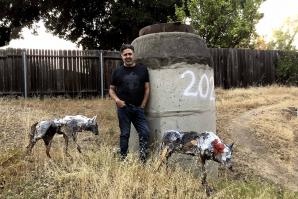
Art Exposed: Craig Martinez
An artist explores culture, religion, ritual and the human condition in his sculptures
Craig Martinez knows his sculptures, made from reclaimed materials, can be challenging, and not everyone is going to like them.
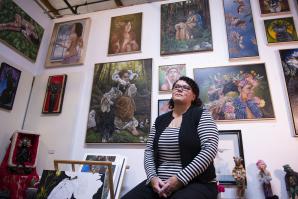
Art Exposed: Laurelin Gilmore
The Sacramento artist’s paintings show a reverence to nature, as she recognizes environmental issues are social issues
Laurelin Gilmore weaves zodiac and earthy elements to show the connectivity humans have to nature.
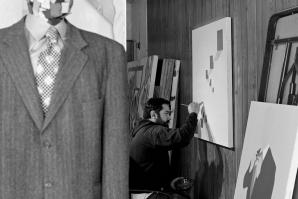
Art Exposed: Manuel Fernando Rios
A West Sacramento Chicano artist confronts ethnic identity in his work
Mentored by Ricardo Favela of the Royal Chicano Air Force artist collective, Manuel Fernando Rios describes his artwork as “neo-Expressionist, neo-Chicano, mixed in with pop culture.” His solo show scheduled for May has been postponed because of the coronavirus pandemic, but he is continuing to make new work.
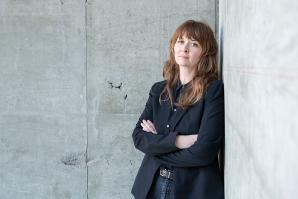
Art Exposed: Serena Cole
After 15 years in the Bay Area, Serena Cole returns to Grass Valley to make art and find community
Cole uses mixed media — watercolor, gouache, colored pencils and vinyl paint — to create vulnerable, delicate and harsh portraits that reflect the way women are viewed in art and society and how the artist digests it all.



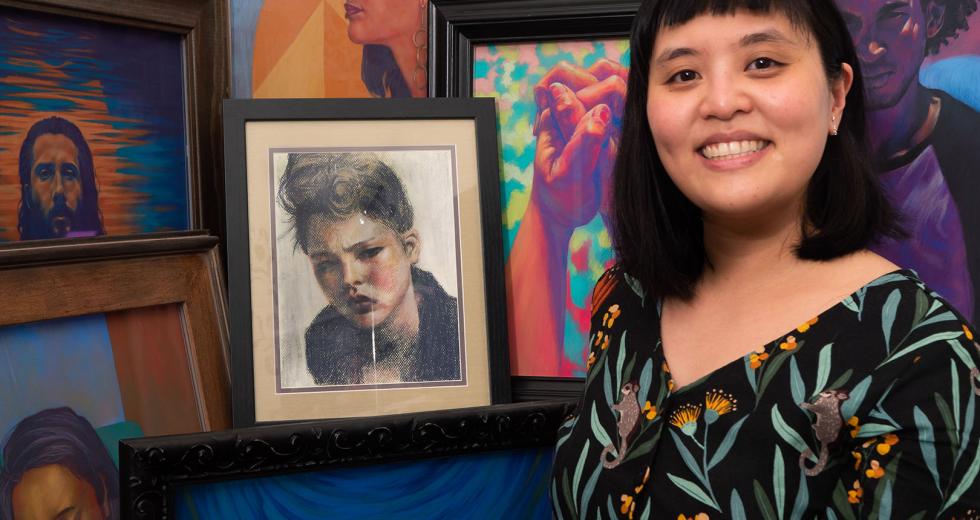
Comments
Fantastic portraits, super talented!